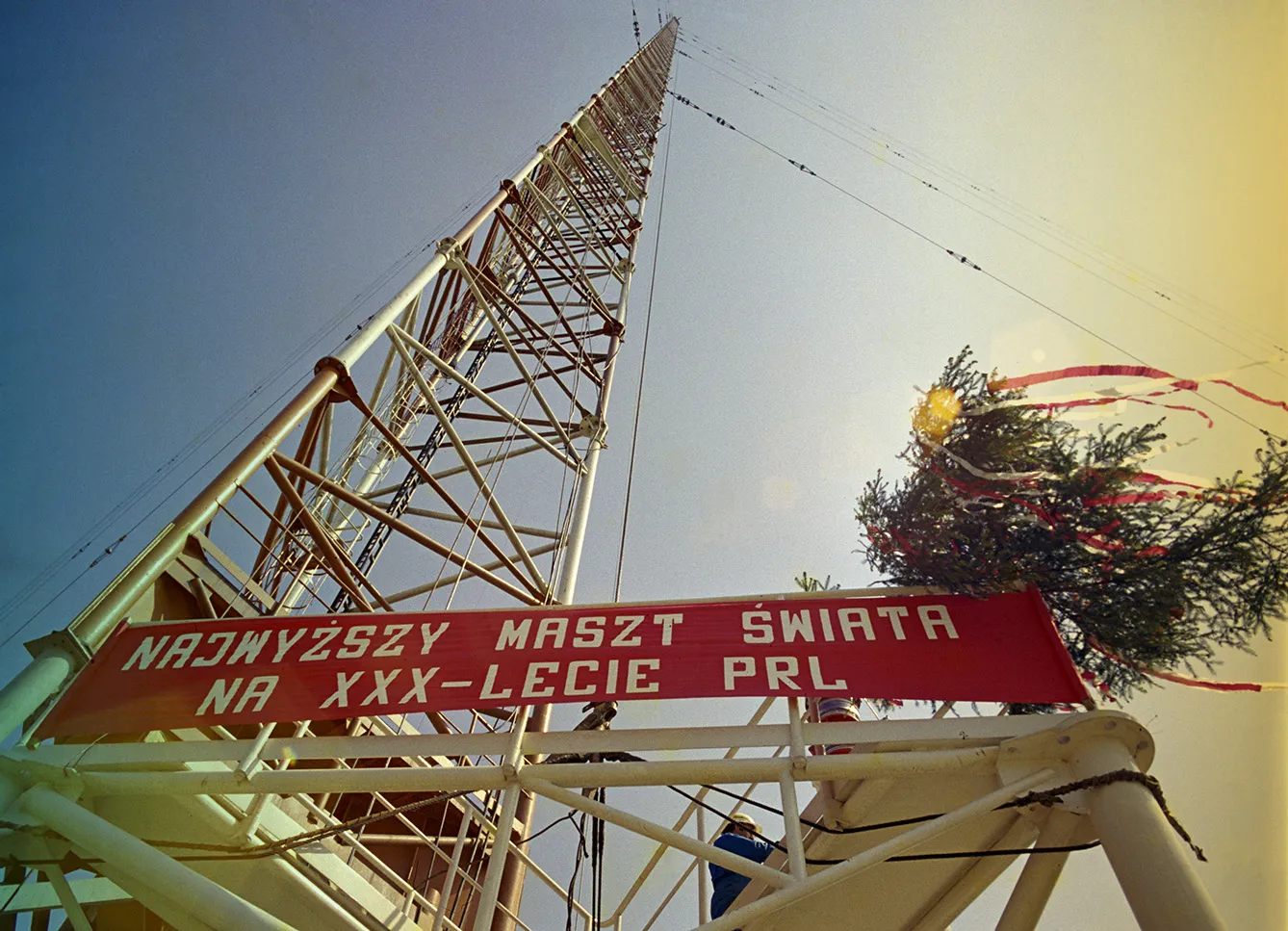Perhaps the most captivating part of the radio mast story is its location. It is one of the rare occasions when being in the center of a region had a practical meaning, and not only a prestigious one. In the case of Poland, it meant replacing the pre-war radio mast in the town of Łazy near Raszyn with a new, post-war structure.
Łazy radio mast: make some noise
The radio mast in Raszyn, just outside Warsaw, was built in 1931, when Poland’s western borders were further to the east, but excluded most of Silesia. On the eastern side, cities such as Lviv (currently in Ukraine), Vilnius (the capital of Lietuva), and Brest (now Belarus) were still Polish. Therefore, despite being rebuilt after damage sustained during World War II, the original mast was insufficient to cover the entire Polish territory in 1949. The new mast was placed further to the west, in the most unpopulated area the location scouts could find. This turned out to be a blessing some twenty years later.
The new mast, which was started in 1969, was officially launched five years later. Four hundred twenty tons of steel rose to a height of 646 meters and 38 centimeters. On 22 July 1974, Communist Poland’s national day, the Konstantynów radio mast took over the duties of its predecessor. There was likely also a political factor to this construction, as the previous record-holder for the tallest building in the World was Moscow’s Ostankino TV tower, which was built in 1967 to commemorate and honor the 50th anniversary of the October Revolution.
The launch was a massive success, with Polish Radio’s Channel One even being heard across Europe and some parts of North America. The Polish voice could finally be present among the large Polish diaspora in Kazakhstan and in temporary settlements of Polish workers, which were present at the time in Eastern Bloc-oriented middle eastern countries, such as Iraq, Iran, and Libya.
Raszyn loosing to Ostankino
However, it all came to a crashing halt on 8 August 1991, when the radio mast in Konstantynów toppled. During renovation works, one of the supporting lines had to be loosened, and it turned out that the temporary support was not secure enough. It took but a few seconds for the entire construction to be destroyed. Miraculously no one was harmed, as the foreman had advised his workers against continuing work. It’s not that anyone expected the crash; he just didn’t want them to stay up there until late in the evening.
After the catastrophe, the Raszyn radio mast came back into operation (for the time being switched broadcasting from Channel Two to Channel One). The Konstantynów radio mast had to be relocated, as local residents, who were apprehensive about the real or imagined electromagnetic dangers, didn’t allow the mast to rebuild in the same spot.
After the Konstantynów radio mast lay in ruins, the Ostankino TV tower came back to its glory as number one. But as the skyscraper technology developed, even taller buildings appeared. In 2008 Burj Khalifa in Dubai became the world’s tallest building, and a year later, it achieved its maximum height of almost 828 meters. The time of radio masts as the tallest structures in the world is already away.
You may be also interested in our article about Prague zoological garden.







